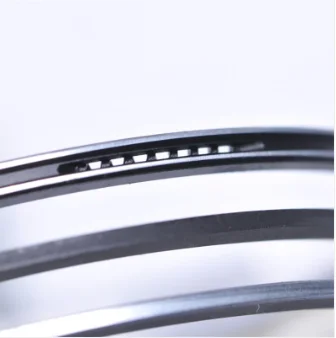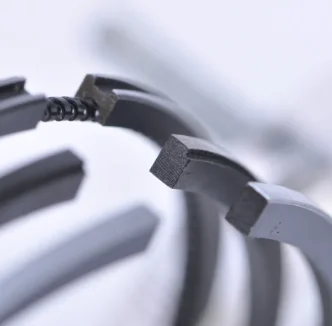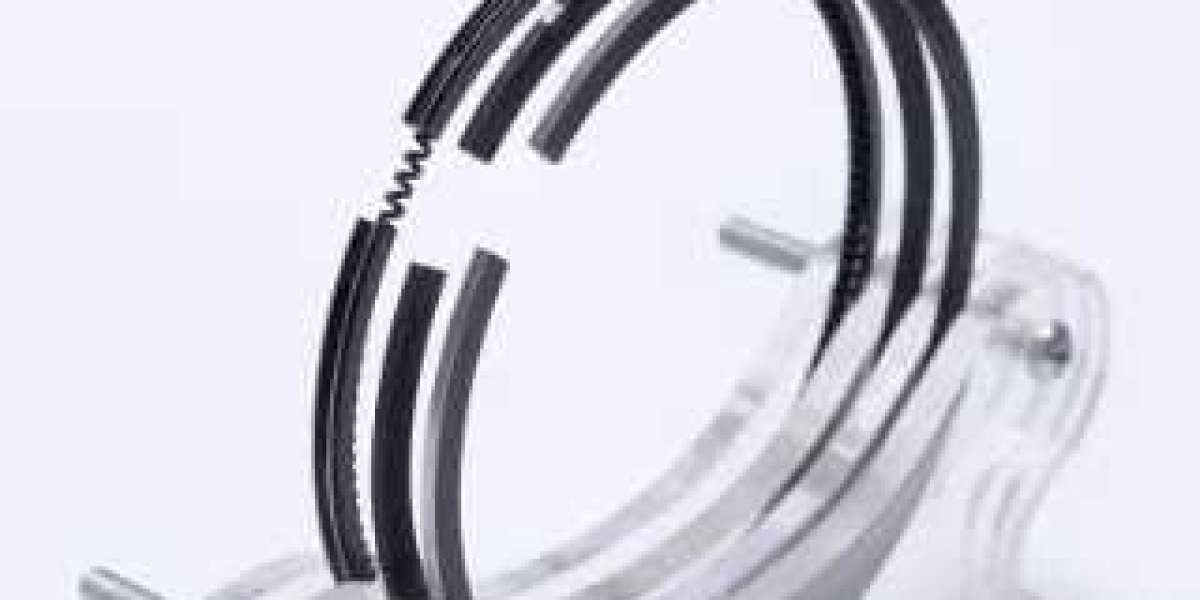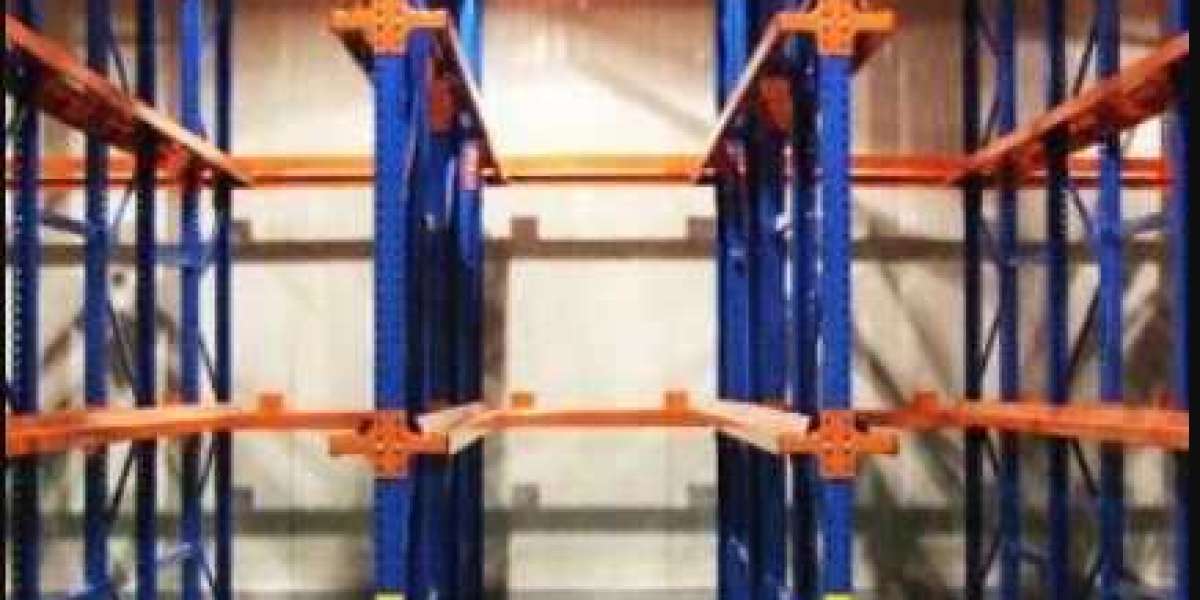Introduction to Engine Piston Rings
Welcome to the world of engines, where power meets precision and performance is paramount. Behind every roaring engine lies a complex system of components working tirelessly to ensure smooth operation and optimal efficiency. And among these vital parts, one stands out as a silent hero: the engine piston ring.
While this small yet mighty component may go unnoticed by many, it plays a critical role in keeping your engine running smoothly and reliably. Engine piston rings are the unsung heroes that seal the combustion chamber, reducing friction, preventing oil leakage, and ultimately ensuring longevity and durability for your vehicle.
In this blog post, we'll delve into the importance of piston rings in an engine's performance. We'll explore different types of piston rings and their functions while providing valuable insights on how to choose the right ones for your specific vehicle. So buckle up and prepare to dive deep into the fascinating world of engine piston rings!
The Importance of Piston Rings in an Engine
Piston rings may be small in size, but they play a crucial role in the overall performance and longevity of an engine. These often-overlooked components are responsible for sealing the combustion chamber, regulating oil consumption, and maintaining compression within the engine cylinders.
One of the primary functions of piston rings is to create a tight seal between the piston and cylinder walls. This prevents any leakage of gases or loss of compression during combustion. Without proper sealing, an engine would experience reduced power output and increased fuel consumption.
In addition to their sealing function, piston rings also help control oil consumption by scraping excess oil off the cylinder walls as the piston moves up and down. This ensures that only a thin film of lubrication remains on the walls for smooth operation while preventing excessive oil from entering the combustion chamber.
Moreover, piston rings aid in heat transfer by absorbing and dissipating heat from the pistons into the cylinder walls. This helps prevent overheating and ensures optimal operating temperatures within the engine.
Choosing high-quality piston rings that match your vehicle's specifications is essential for optimal performance. Factors such as material composition, ring design, and compatibility with your specific engine type should be taken into consideration during selection.
Regular inspection and maintenance are necessary to ensure that your piston rings are functioning properly. Signs of worn or damaged rings include excessive oil consumption, poor compression readings, or blue smoke coming out from exhaust pipes.
Understanding how vital these small components are can make all drivers appreciate their significance in keeping engines running smoothly. So next time you start your car's engine, remember to give credit where it's due – to those humble little heroes called piston rings!

Different Types of Piston Rings and Their Functions
Piston rings are a crucial component in any engine, ensuring proper sealing and maintaining compression within the cylinders. There are several different types of piston rings, each with its own specific function.
1. Compression Rings: These are the topmost rings on the piston and their primary role is to seal the combustion gases inside the cylinder. They prevent leakage during explosion, maximizing power output and efficiency.
2. Oil Control Rings: Positioned below the compression rings, oil control rings regulate lubrication by scraping excess oil off the cylinder walls. This prevents excessive oil consumption while maintaining optimal lubrication for smooth operation.
3. Napier Rings: Designed specifically for high-performance engines, Napier rings have an asymmetrical shape that improves oil control by creating a pumping action. This reduces friction and enhances overall performance.
4. Tension Rings: Also known as "expander" or "support" rings, tension rings provide radial pressure against both sides of other ring types to maintain their position on the piston groove.
5. Keystone Rings: Keystone-shaped piston rings offer excellent stability due to their unique design that eliminates lateral movement within grooves while still providing efficient sealing properties.
6. Dykes Ring: Used in certain diesel engines or low-compression applications, dykes ring is a thin steel ring that provides effective gas sealing while minimizing frictional losses.
Each type of piston ring plays a vital role in optimizing engine performance and durability based on specific requirements such as power output, fuel efficiency, and operating conditions.
How to Choose the Right Engine Piston Rings for Your Vehicle
When it comes to choosing the right engine piston rings for your vehicle, there are several factors you need to consider. The type of engine, its size, and the intended use of your vehicle all play a role in determining the ideal piston ring design.
You need to understand the different types of piston rings available. There are compression rings, oil control rings, and scraper rings. Compression rings seal the combustion chamber and prevent gas leakage. Oil control rings regulate oil consumption and maintain proper lubrication. Scraper rings remove excess oil from the cylinder walls.
Next, consider the material used for piston rings. Cast iron is commonly used due to its durability and heat resistance. However, newer materials like steel or chrome-plated steel provide improved performance under high-stress conditions.
Another important consideration is ring thickness and width. Thicker rings offer better durability but may increase friction and reduce power output. Narrower rings reduce friction but may be less durable.
The final aspect to keep in mind is compatibility with your specific engine model. Consult your vehicle's manufacturer or an experienced mechanic for guidance on which piston ring specifications will work best for your engine.
Choosing the right engine piston rings requires careful consideration of various factors such as ring type, material, dimensions, and compatibility with your specific vehicle model. By making an informed decision based on these factors, you can ensure optimal performance and longevity for your engine system

How to Replace Engine Piston Rings
Replacing engine piston rings is a complex task that requires precision and attention to detail. It's not something you should attempt unless you have experience working on engines. If you're unsure or unfamiliar with the process, it's best to leave it to a professional mechanic.
To start the replacement process, the engine must be disassembled. This involves removing the cylinder head and oil pan, as well as disconnecting various components such as the connecting rods and crankshaft. Once these parts are removed, you can access the pistons and begin removing the old piston rings.
Removing the old piston rings can be challenging because they fit tightly in their grooves. A special tool known as a ring compressor is used to compress each ring so that it can be easily slid off of its groove on the piston. Care must be taken not to damage any other parts of the engine during this step.
Once all of the old rings have been removed, it's time to install new ones. The new rings should be carefully inspected for any defects before installation. Each ring needs to be properly positioned in its corresponding groove on each piston.
After installing all of the new piston rings, reassembly can begin by reversing the steps taken during disassembly. This includes reconnecting all components that were previously disconnected and ensuring everything is torqued down correctly.
While replacing engine piston rings may seem like a daunting task, following proper procedures and taking your time will ensure success. Always consult your vehicle's repair manual for specific instructions related to your particular make and model of car.

Conclusion
Engine piston rings may be small, but they play a crucial role in the overall performance and longevity of an engine. They provide a tight seal between the piston and cylinder wall, preventing any leakage of combustion gases or oil. This ensures efficient fuel burn and reduces wear and tear on engine components.
Choosing the right piston rings for your vehicle is essential to maintain optimal engine performance. Consider factors such as material composition, ring design, and compatibility with your specific engine model. Consult with experts or refer to manufacturer recommendations to make an informed decision.
Replacing worn-out piston rings should not be ignored if you want your engine to last longer and perform at its best. It might seem like a complex task, but following proper procedures can help you get it done effectively. Seek professional assistance if needed or refer to reliable resources for step-by-step instructions.
Remember that regular maintenance, including checking the condition of your piston rings, is essential to ensure their longevity and durability. By giving attention to these seemingly small components, you can significantly extend the life of your engine while enjoying smooth operation on every drive.



